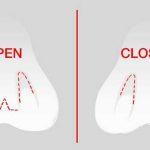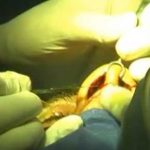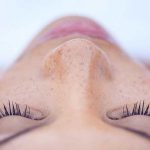Frequently Asked Questions about Rhinoplasty and Facial Plastic Surgery
For pregnancy 6 months must pass from the surgery.
Up to one month after rhinoplasty, heavy exercises should be avoided, but stretching and light exercise is possible after the first week. Swimming should be delayed until one month after surgery.
About 95% of patients are completely satisfied with the results of nose surgery. By retouch and reoperation we satisfy patients who were dissatisfied. Today the high success rate of this operation, low side effects, and the ease of operation have increased the number of applicants and in this surgery Iranian surgeons are the most experienced surgeons in the world.
In few cases due to postoperative inflammation, nasal congestion and nose olfactory problems may occur, which usually disappears within 3 months.
In cases where the patient is not satisfied with rhinoplasty result or he has particular problems such as bumps, dents, deviation, and large tip of the nose a surgery is recommended and the best time for it is 6 months to a year after the first operation.
Generally there are two types of nose surgery technique one is open and the other one is closed. In closed technique, the incisions are made inside the nose and through nostrils, however the vision of surgeon is limited, but in the open technique, removal through the skin is in the middle of cullomella.
In recent years surgeons’ tendency to perform open techniques has been increased, doctor Kazemi also performs most of his surgeries with open technique. In this technique, the skin goes up and a broad vision is created for the surgeon and the surgeon performs the surgery with two-hands.
In general, personality disorders in men who have tendency for nose surgery is more than women and disorders such as obsessions is more in this group of patients. But in general, if the male patient suffers from obvious problems such as deformation or deviation and breathing difficulties by a thorough review and interview before the operation, the surgery can be performed.
The visit times after rhinoplasty are every week in the first month and after the first month, respectively, 3, 6 and 9 and 12 (in the first year) and then at months 18 and 24 in the second year of operation. The reason for these visits is to assess nose changes over time to perform the required actions if necessary, but usually the final result will be determined at the end of the first year.
There is no definitive agreement among surgeons about the necessary medication after nasal surgery, but in general, usually an antibiotic (e.g., cephalexin) and an antihistamine (such as chlorpheniramine and adult cold tablets) and mild painkillers are prescribed.
If before, during and after the surgery, we pay attention to all the conditions necessary for preserving the nose health in terms of breathing, even in this condition we can perform surgery. However, in this case, the surgeon is faced with many problems in surgery, but he dominates on them and performs the surgery.
Some noses are known as fleshy noses and they are characterized by a broad nose with thick skin, minimal cartilage tissue. Correction procedures of such noses are different from the surgical methods of bony noses. In the fleshy nose surgery, the use of nasal skeleton strengthening methods for increasing the support for the soft tissues of the nose is essential and by using new techniques in the surgery of this type of noses, favorable results can be achieved.
One of the frequently asked questions from doctor Kazemi is the appropriate age for nose surgery or rhinoplasty; I would like to tell you that within seventeen years of age to perform rhinoplasty may be the most imposing twenty to thirty years in the categories. Rhinoplasty may be performed from the age of seventeen and most operations are done in age range of twenty to thirty years.
There is the possibility of rhinoplasty at old ages even up to sixty years old, but in our clinic we do not recommend surgery for people over fifty years, because aging of skin and its loosening and falling of tissues, results in drooping of tip of the nose and causes the deformity of the nose tip and the subcutaneous tissue. As a result, the surgery will have a negative impact, so the best age for nose surgery is between the ages of twenty to thirty but it is quite possible from the age of seventeen to fifty years.
No, in some cases, such as nose cancers and tumors of this area, rhinoplasty techniques are used for the subsequent resection of the tumor or removal of lesions such as cysts.
Skin is one of the main factors in getting the excellent results from cosmetic nose surgery (rhinoplasty). Thick skin works like a rubber and does not return well to its place.
Thin skin is like a transparent curtain and defects below it can be seen. Thus, the average thickness of the skin, can pose the best results. Note that the final result of the surgery depends on the patient's skin and the surgeon's work.

 فارسی
فارسی  العربية
العربية  Русский
Русский  Kurdish
Kurdish 




